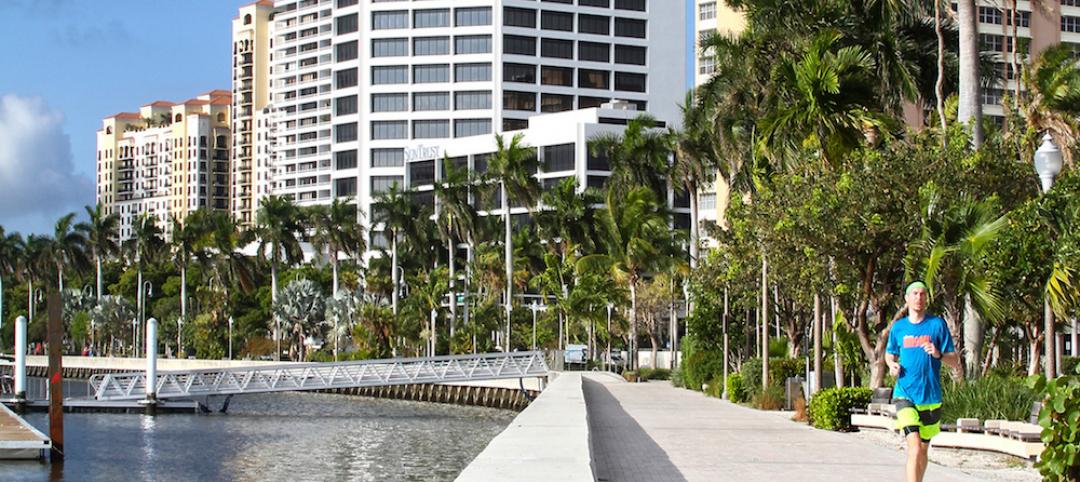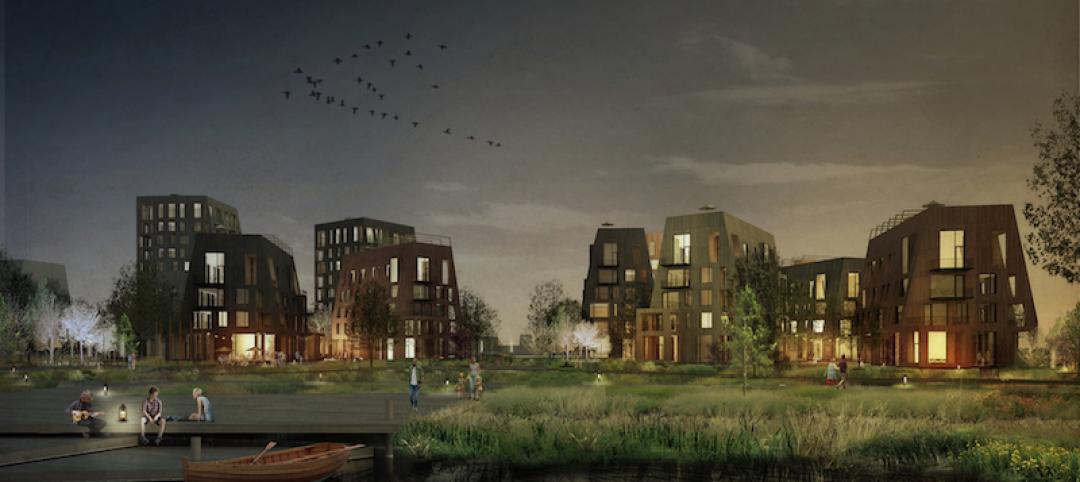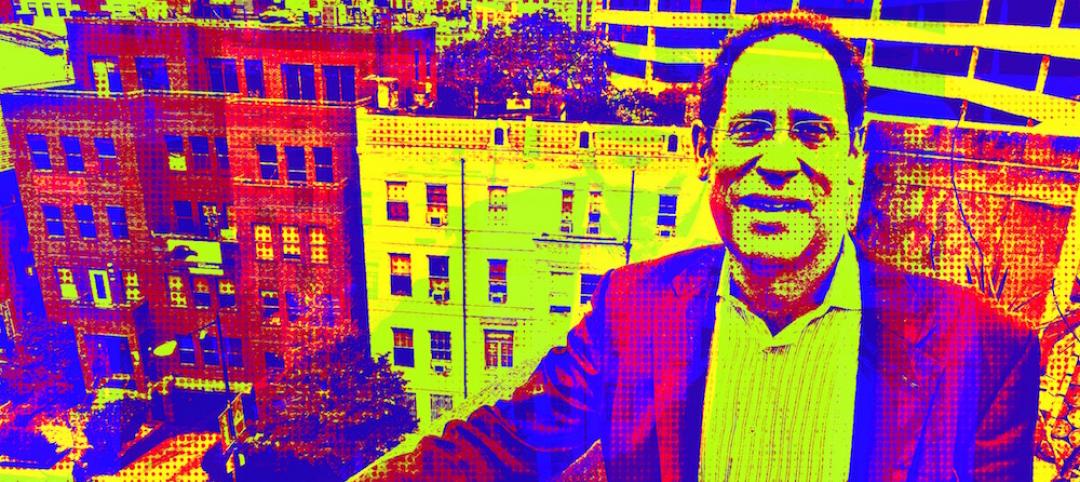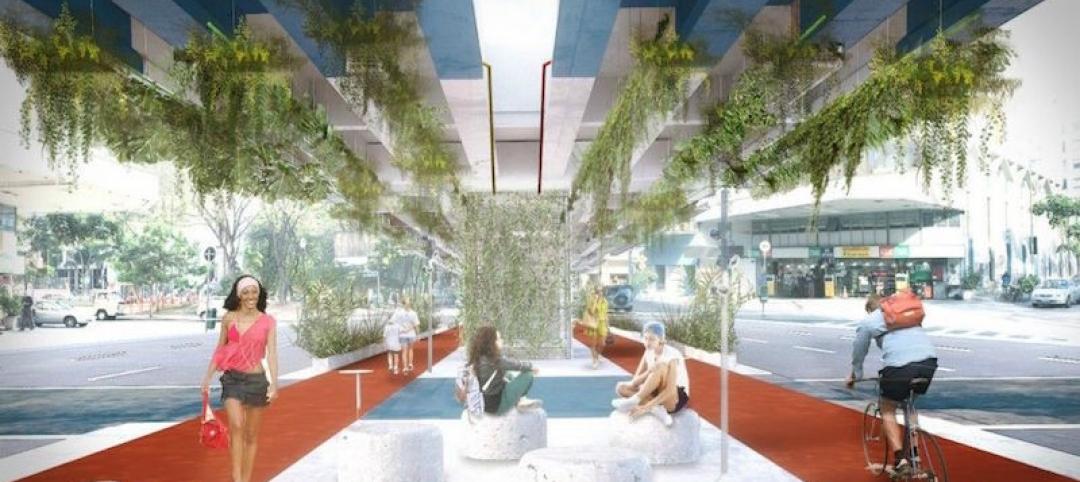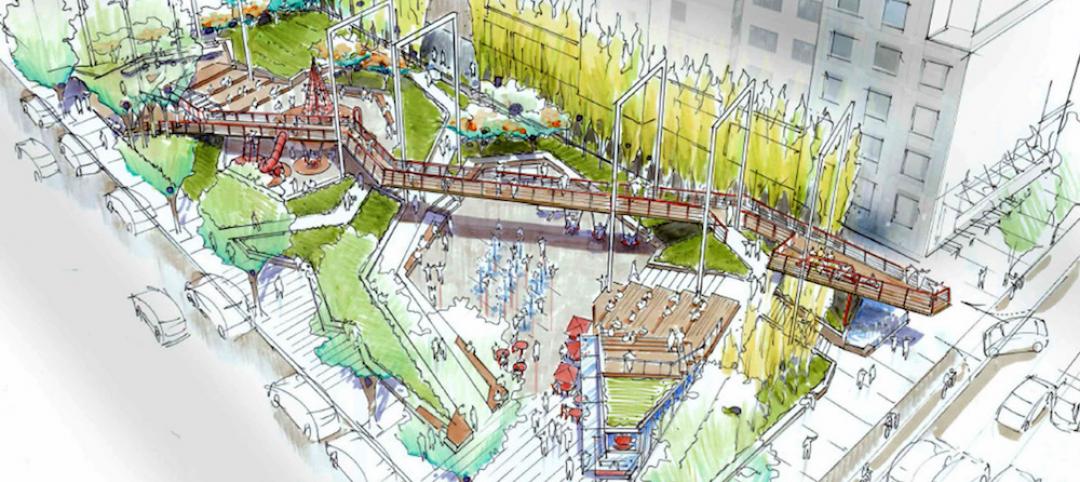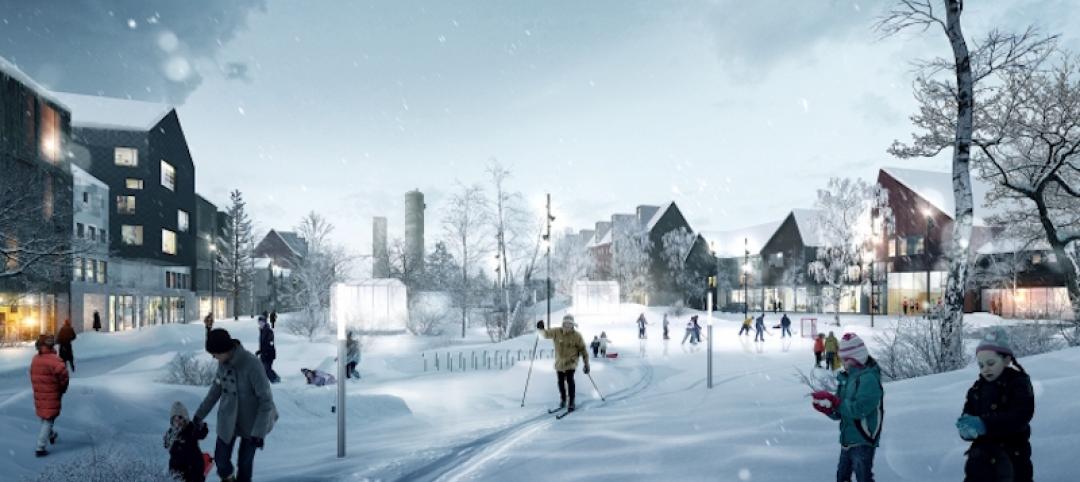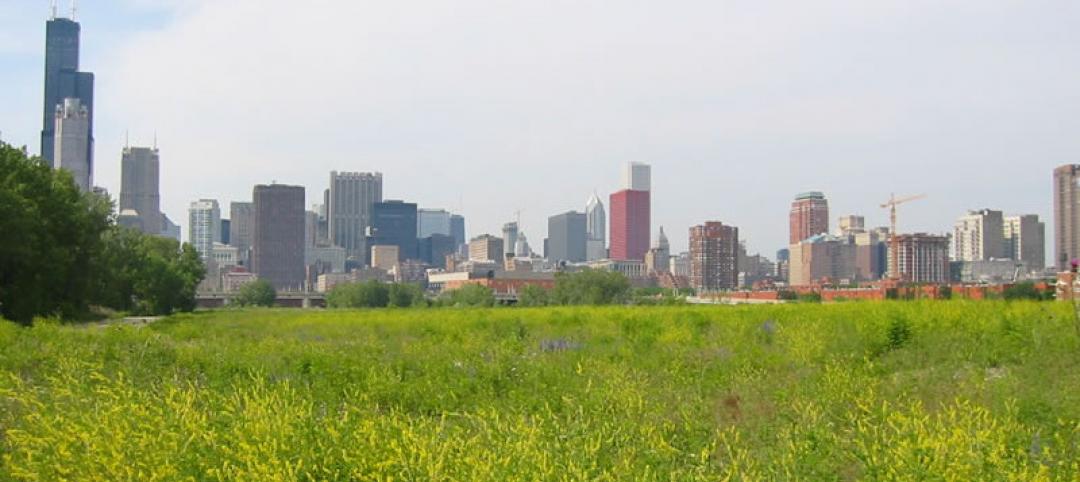One-quarter of city dwellers draws a line that connects the economic and environmental challenges of urban living with negative impacts on their mental health and well-being, and nearly as many urbanites say the challenges can affect them physically.
Those are some of the key findings in an “Architects of Change” report, based on an 11-question survey of 4,024 city dwellers in the U.S., United Kingdom, Germany, and Italy, commissioned by Chaos, a global leader in 3D visualization tools, and conducted on January 3-8, 2024, by Censuswide.
The report combines a rather bleak portrayal of city living with analysis—by John M. Cays, Associate Dean for Academic Affairs at New Jersey Institute of Technology’s Hillier College of Architecture and Design—that offers suggestions about how architects and designers might visualize the city of the future in ways that make urban living more palatable for residents, especially those age 35 to 44 who are most likely to purchase a house and become parents.
Climate change is adding stress to urban living
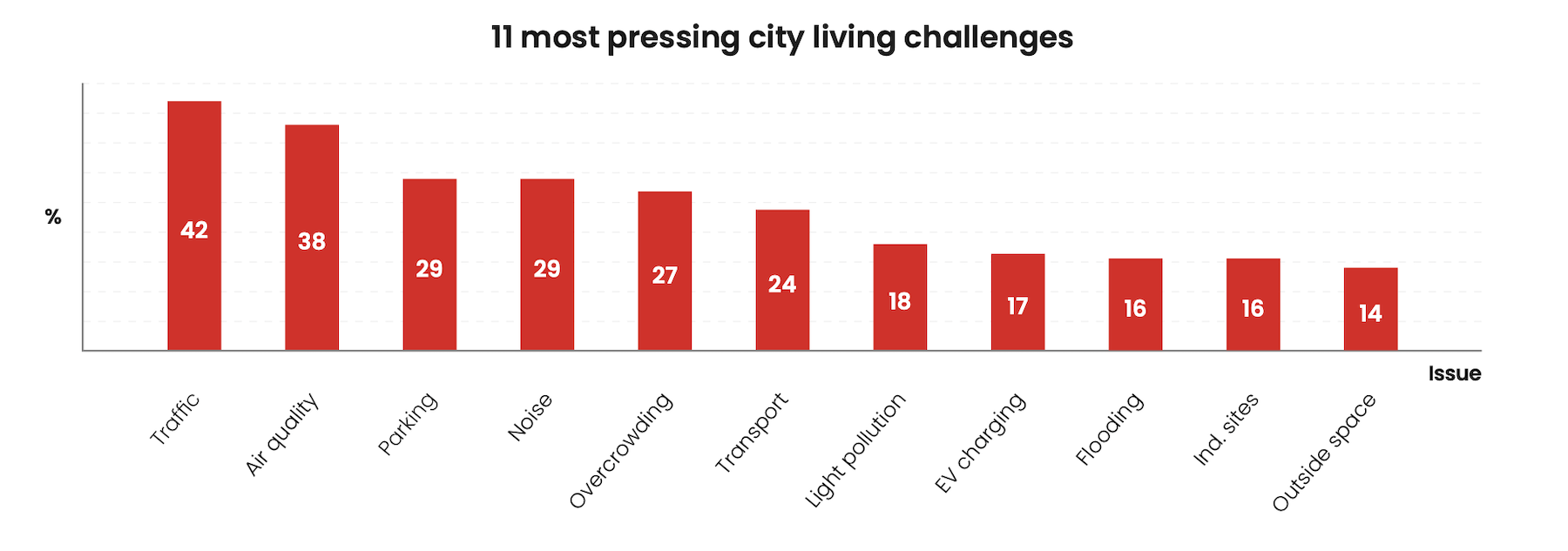 While the respondents were pretty evenly divided among age, income, and geographic cohorts, the “common” respondent lives in a three-person household. Ten percent lives alone, and 13 percent lives in a household of five or more people. The respondents ranged from 16 to 55-plus years old, with the greatest portion falling within 35 and 44. Fifty-six percent of respondents—and 70 percent in the U.S. and Italy—owns homes outright.
While the respondents were pretty evenly divided among age, income, and geographic cohorts, the “common” respondent lives in a three-person household. Ten percent lives alone, and 13 percent lives in a household of five or more people. The respondents ranged from 16 to 55-plus years old, with the greatest portion falling within 35 and 44. Fifty-six percent of respondents—and 70 percent in the U.S. and Italy—owns homes outright.
Nearly three-quarters, 73 percent, of the survey’s respondents have lived in cities for at least five years. But that number drops to 28 percent when so-called nonnatives—people who were born in cities and have lived there all their lives—are excluded.
(The report links mobility and income. Among respondents with incomes of more than $45,501, the number of nonnatives who have lived in cities five years or fewer exceeds those who have lived in cities five years or more.)
The urban living experience can be stressful, especially when now when housing prices and rents are escalating. Sixty-three percent of respondents connect how much they pay for housing with declines in their quality of life. Nearly half, 47 percent, were considering moving to less-expensive housing markets. And 73 percent worry about the rising cost of energy.
City dwellers must put up with all kinds of annoyances, too. Forty-two percent of respondents cited traffic congestion, followed by access to parking (29 percent) and noise pollution (29 percent). The good news for AEC firms is that these complaints leave open the door for building improvements in soundproofing and in-home air filtration.

Cities are also at the doorstep of climate change, and their residents are noticing. Fifty-seven percent of respondents said they feel temperate extremes that affect their mental health and well-being. Another 21 percent cited weather extremes as a reason for moving. Three-fifths of respondents said they are willing to pay for solar panels that would lessen the impact of environmental change. And more than one-quarter of those survey sees climate change as a driver for storm- and floodproofing their homes.
(One finding that’s hard to explain: households with six or more people expressed the least concern for environmental design changes.)
Does urban living reinforce enduring home qualities?
More than three-fifths of those polled say that urban living places more economic pressure on them. Not surprisingly, lower-income city dwellers are feeling that pressure more acutely; however, energy costs are palpable as well for higher-income residents who are likely to be living in larger homes that consume more energy.
Cays, the Hillier College dean, observed the rise in micro housing units as one solution to housing inflation. And while the enduring qualities of a home—as a place of refuge, gathering, and repose—will remain constant, Cays can also envision tomorrow’s homes as “simply bathing and sleeping hubs,” with additional needs, like cooking and recreation, more external communal services.
On the climate change front, Cays’ analysis was more general and obvious. He said that any solutions must reflect geographic diversity, and that understanding building performance can make cities more adaptable to change.
Millennials are vulnerable to urban living pressures
 The report presents Millennials as the lifeblood of cities, but also as the age group most vulnerable to the pressures of urban living. Their biggest reason for leaving cities is rising housing costs. And if cities can’t hold onto their Millennial residents and attract new ones, those cities are likely to close schools, lose small businesses and entertainment venues, and see declines in the arts, healthcare, and open spaces.
The report presents Millennials as the lifeblood of cities, but also as the age group most vulnerable to the pressures of urban living. Their biggest reason for leaving cities is rising housing costs. And if cities can’t hold onto their Millennial residents and attract new ones, those cities are likely to close schools, lose small businesses and entertainment venues, and see declines in the arts, healthcare, and open spaces.
Cays said that architects can visualize urban design that supports families, provides schools and open spaces, and “incentivizes the protection and promotion of communities.”
Related Stories
Augmented Reality | Jul 15, 2016
Pokémon Go is helping people discover their cities
While catching them all may be the main goal, the wildly popular mobile game is also leading people to trek to unexplored corners of their cities
Urban Planning | Jul 13, 2016
'Shore to Core' competitions envision future waterfront cities
Design and research teams will use West Palm Beach, Fla., as their model.
Urban Planning | Jul 7, 2016
Y Combinator project would build new city using new technology, urban policies
Zoning, property rights, building codes all could be re-imagined.
Urban Planning | Jun 15, 2016
Swedish ‘Timber Town’ proposal from C.F. Møller provides a unique blend of nature and city
The development acts as a transition area between a traditional urban landscape and parklands.
Movers+Shapers | Jun 10, 2016
URBAN EVANGELIST: Bruce Katz sees America humming again, city by city
Katz, best known as Co-director of the Brookings Institution's Metropolitan Policy program, believes that cities are dynamic networks of like-minded public and private interests that have the potential to generate economic growth.
Urban Planning | Jun 9, 2016
Triptyque Architecture designs air-cleansing hanging highway garden in São Paulo
The garden would filter as much as 20% of CO2 emissions while also providing a place for cultural events and community activities.
Urban Planning | May 31, 2016
Vancouver park board approves final design for urban park
The green space is intended to be a recreation area for a busy part of downtown.
Urban Planning | May 31, 2016
The entire Swedish city of Kiruna is being relocated to prevent it from collapsing into underground iron mines
Kiruna, the northernmost city in Sweden, and its 20,000 residents will be moved two miles to the east by 2040.
Urban Planning | May 23, 2016
Developer acquires 62 acres of vacant land in Chicago
Related Midwest will turn the strip that connects the South Loop to Chinatown into a neighborhood with homes, stores, and offices.
Urban Planning | May 20, 2016
Why people are the most important factor in urban regeneration
What makes large-scale urban regeneration projects successful? CallisonRTKL's Edgar Kiviet explores how cities, particularly those in Eastern Europe, are undergoing a transformation.




